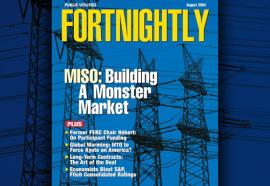Battle of the Big Nukes
Why the Tennessee Valley Authority and Duke Energy chose Westinghouse’s nuclear power-plant design over GE’s.
Jack Bailey, vice president, nuclear generation, at Tennessee Valley Authority explains why his organization finally decided on the Westinghouse AP1000. TVA is part of the NuStart consortium at the Belafonte site in Scottsboro, Ala., where TVA is developing a combined operating license for the Westinghouse AP1000 reactor.



